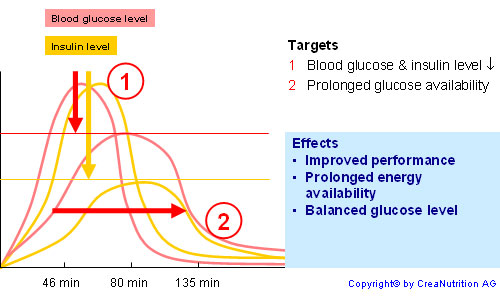 Lowering Glycemic Index
Lowering Glycemic Index

Glycemic Response
Lengthening of carbohydrate digestion and absorption seems to be the major factor responsible for a lower plasma glucose response.Once ingested, the soluble fiber β-glucan becomes a viscous gel in the stomach and small intestine. This gel, which envelops the other dietary ingredients, delays the emptying of the stomach. It also makes it more difficult for digestive enzymes, such as amylases and lipases, to penetrate and digest the food material. Consequently, hydrolysis of food nutrients are slowed down, as well as their delivery to the mucosal cells and their absorption. Viscosity reduction of the β-glucan by acid treatment suppressed the attenuation of the glycemic peak.
OatWell® oat bran has been clinically shown to reduce the rate of nutrient absorption and alter the secretion of gut hormones. Viscous soluble fibers create a gel-like consistency in the stomach which envelops nutrients and slows the action of digestive enzymes. The thick gel slows digestion of nutrients and gastric emptying, which ultimately leads to the delaying of absorption. This slowed digestion and absorption results in a flatter postprandial glycemic response. High fiber diets, with approximately 50 % soluble fiber, have shown 10% reductions in average blood glucose levels and 25% reduction in postpranial blood glucose.
References
| Battilana et al. | Mechanism of action of beta-glucan in postprandial glucose metabolism in healthy men | Eur J Clin Nutr | 2001 |
| Wood et al. | Evaluation of role of concentration and molecular weight of oat beta-glucan in determining effect of viscosity on plasma glucose and insulin following an oral glucose load. | Brit J Nutr | 2000 |
| Würsch & Pi-Sunyer | The role of viscous soluble fiber in the metabolic control of diabetes | Diabetic Care | 1997 |
Please see EnergyInBalance under Brand & Concepts for more information about the concept referring to this mechanism of action.

